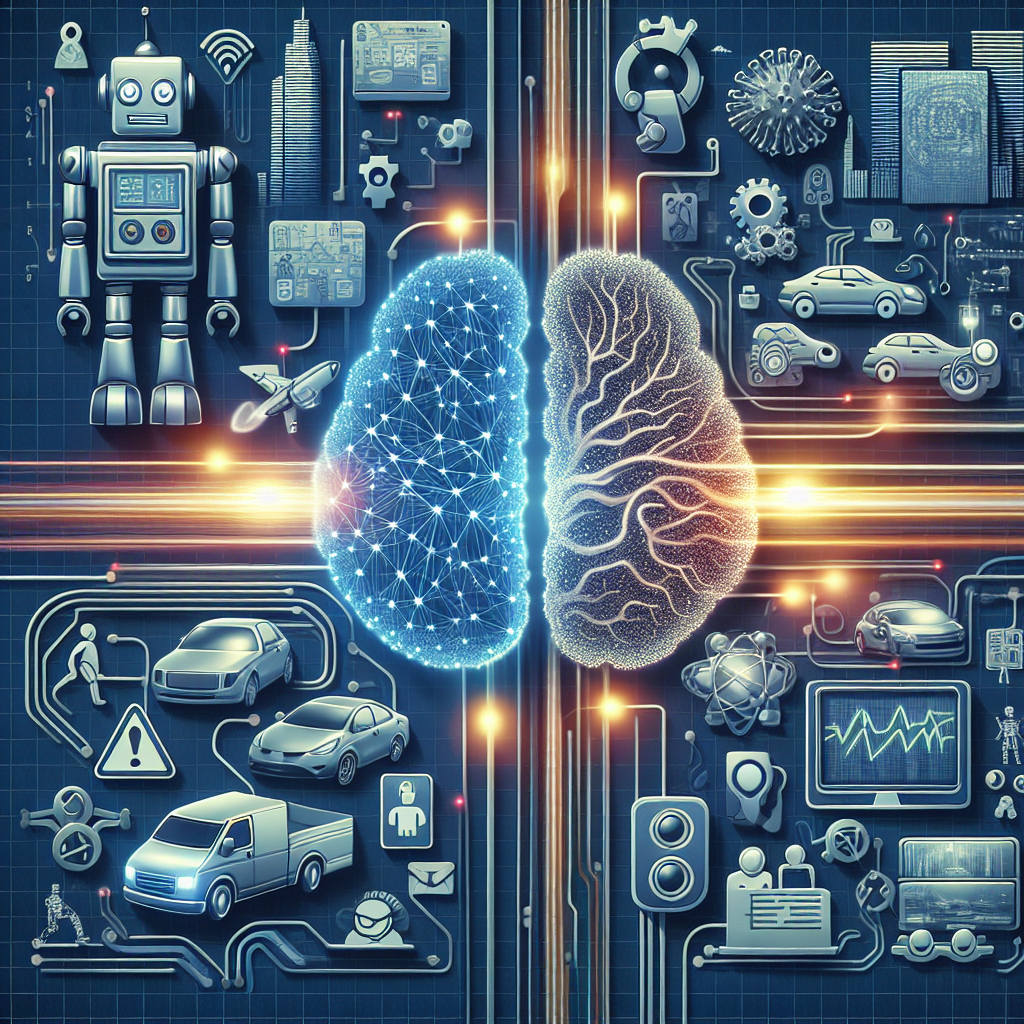AI vs Machine Learning: Exploring the Applications
Artificial Intelligence (AI) and Machine Learning (ML) are two terms that are often used interchangeably, but they are actually two distinct fields within the realm of technology. While AI refers to the broader concept of creating machines that can perform tasks that would typically require human intelligence, Machine Learning is a subset of AI that focuses on creating algorithms that can learn from and make predictions based on data.
Both AI and Machine Learning have a wide range of applications across various industries, from healthcare to finance to entertainment. In this article, we will explore the differences between AI and Machine Learning, as well as some of the key applications of each technology.
Differences between AI and Machine Learning
As mentioned earlier, AI is a broad field that encompasses the development of machines that can perform tasks that would typically require human intelligence. This can include tasks such as speech recognition, image recognition, natural language processing, and decision-making. AI systems can be either narrow or general in their capabilities, with narrow AI being designed to perform specific tasks, while general AI is designed to perform a wide range of tasks.
Machine Learning, on the other hand, is a subset of AI that focuses on creating algorithms that can learn from and make predictions based on data. In other words, Machine Learning is a way to achieve AI. Machine Learning algorithms are designed to analyze data, identify patterns, and make decisions or predictions based on those patterns. There are three main types of Machine Learning algorithms: supervised learning, unsupervised learning, and reinforcement learning.
Supervised learning involves training a model on labeled data, where the algorithm learns to make predictions based on input-output pairs. Unsupervised learning involves training a model on unlabeled data, where the algorithm learns to identify patterns and relationships in the data. Reinforcement learning involves training a model through trial and error, where the algorithm learns to make decisions based on rewards or penalties.
Applications of AI
AI has a wide range of applications across various industries, from healthcare to finance to entertainment. Some of the key applications of AI include:
1. Healthcare: AI is being used in healthcare to improve diagnosis, treatment, and patient care. AI-powered systems can analyze medical images, such as X-rays and MRIs, to detect abnormalities and assist radiologists in making more accurate diagnoses. AI can also be used to analyze patient data and identify patterns that can help doctors make better treatment decisions.
2. Finance: AI is being used in finance to automate tasks such as fraud detection, risk assessment, and portfolio management. AI-powered systems can analyze large volumes of financial data in real-time to identify potential fraud or predict market trends. AI can also be used to create personalized investment strategies based on an individual’s financial goals and risk tolerance.
3. Entertainment: AI is being used in the entertainment industry to create personalized recommendations for movies, music, and TV shows. AI-powered systems can analyze user data, such as viewing history and preferences, to recommend content that is likely to be of interest to the user. AI can also be used to create virtual characters or enhance special effects in movies and video games.
Applications of Machine Learning
Machine Learning also has a wide range of applications across various industries, from marketing to transportation to cybersecurity. Some of the key applications of Machine Learning include:
1. Marketing: Machine Learning is being used in marketing to analyze customer data and create personalized marketing campaigns. Machine Learning algorithms can analyze customer behavior, such as browsing history and purchase patterns, to identify potential leads or predict future purchases. Machine Learning can also be used to optimize marketing strategies, such as email campaigns or social media advertising.
2. Transportation: Machine Learning is being used in transportation to improve traffic management, route optimization, and predictive maintenance. Machine Learning algorithms can analyze traffic data in real-time to identify congestion hotspots or predict traffic patterns. Machine Learning can also be used to optimize transportation routes, such as delivery routes for packages or ride-sharing services.
3. Cybersecurity: Machine Learning is being used in cybersecurity to detect and prevent cyber threats. Machine Learning algorithms can analyze network traffic data to identify abnormal behavior or patterns that may indicate a cyber attack. Machine Learning can also be used to create predictive models that can anticipate future cyber threats and proactively defend against them.
FAQs
Q: What is the difference between AI and Machine Learning?
A: AI is a broad field that encompasses the development of machines that can perform tasks that would typically require human intelligence, while Machine Learning is a subset of AI that focuses on creating algorithms that can learn from and make predictions based on data.
Q: What are some key applications of AI?
A: Some key applications of AI include healthcare (improving diagnosis and treatment), finance (automating tasks such as fraud detection and risk assessment), and entertainment (creating personalized recommendations for movies and music).
Q: What are some key applications of Machine Learning?
A: Some key applications of Machine Learning include marketing (analyzing customer data and creating personalized campaigns), transportation (improving traffic management and route optimization), and cybersecurity (detecting and preventing cyber threats).
In conclusion, AI and Machine Learning are two distinct fields within the realm of technology, each with a wide range of applications across various industries. While AI focuses on creating machines that can perform tasks that would typically require human intelligence, Machine Learning focuses on creating algorithms that can learn from and make predictions based on data. Both AI and Machine Learning have the potential to revolutionize the way we work, live, and interact with technology in the future.

